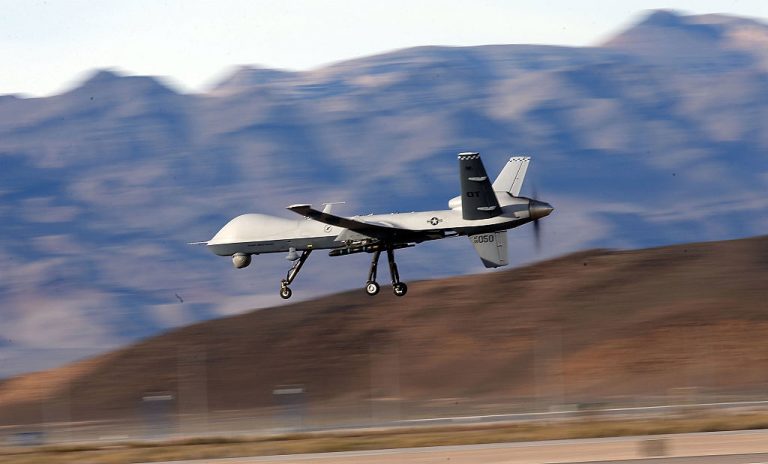In a second US attack on al-Qaeda leadership in approximately one month, a drone strike near Suluk, Syria has killed Abdul Hamid al-Matar, a man described as “a senior al-Qaeda leader”. He was killed by an MQ-9 Reaper drone, according to Army Maj. John Rigsbee, who posted his statement on the website for U.S. Central Command (CENTCOM).
Rigby further stated, “The removal of this al-Qaeda senior leader will disrupt the terrorist organization’s ability to further plot and carry out global attacks threatening U.S. citizens, our partners, and innocent civilians.”
The CENTCOM statement ended with the warning, “The U.S. will continue to target members of al-Qaeda and other terrorist organizations who intend to harm the U.S. homeland.”
Airstrikes in Syria have been reported in the past month that was attributable to Russian forces as well as to Israel. CBS detailed that targets over the past three months included operatives related to al-Qaeda who had been sent from Pakistan to Syria to stir up trouble.
This drone strike, in Syria’s north, comes just a few days after a coalition group attacked an al-Qaeda outpost in southern Syria on Oct. 15 in a strike that killed a leader of the network of veteran al-Qaida operatives known as the Khorasan Group. CENTCOM reported that the US Department of Defense named Abdul Mohsen Abdallah Ibrahim al Charekh, also known as Sanafi al-Nasr, a Saudi national and the highest-ranking leader of the group, as the target of the drone strike. A CENTCOM statement on Oct. 19 cites a DoD article from the same day in explaining that al-Nasr was “a longtime jihadist experienced in funneling money and fighters.”
Success
You are now signed up for our newsletter
Success
Check your email to complete sign up
CBS said that “Like Muhsin al-Fadhli, the purported leader of the Khorasan group who was killed in a U.S. airstrike in July” al-Nasr is believed to have been “sent to Syria by al Qaeda chief Ayman al-Zawahri to help plot operations” for al Nusra front, which is a portion of the group located there.
CBS further reported that “al-Nasr came from a prominent jihadi family and was himself believed to be a third cousin of Osama bin Laden, with two brothers who served time at the U.S. detention facility in Guantanamo Bay, Cuba.” The news outlet said some sources believed al-Nasr was in charge of the group’s elite forces.
Regarding the most recent strike, it has not been mentioned if al-Matar is a part of the Khorasan Group, which has fomented terrorist activity within the region for over seven years. According to a Heritage Foundation report from 2014, when the group was first garnering attention: “Many members of the group, estimated to number in the dozens, are veterans of al-Qaeda’s unholy war in Afghanistan and Pakistan.” This region they came from is part of what once comprised “Khorasan” in ancient times. Heritage Foundation continues, “To underscore the Islamic connection, al-Qaeda adopted a black flag as its symbol.” The Heritage Foundation further explained, “its mission is to recruit, train, and deploy Western militants drawn to the fighting in Syria for attacks on Western targets,” and says that US officials consider the group to be “t’he primary Al-Qaeda entity plotting near-term attacks against the West.’”














